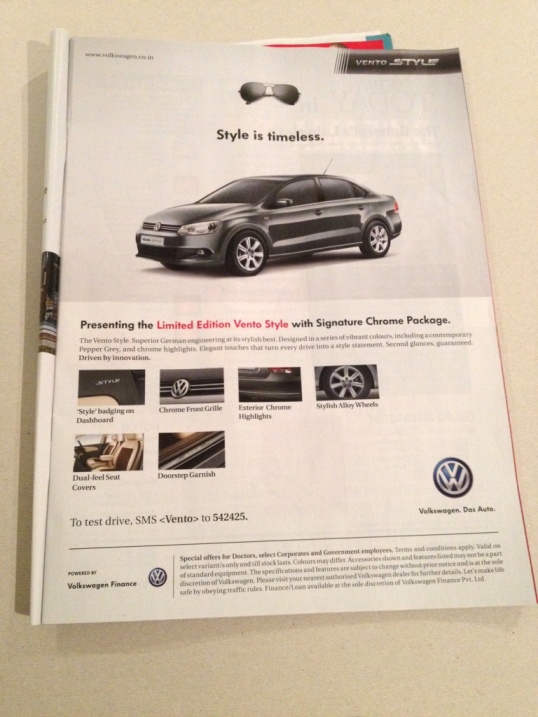Whenever a friend or family goes abroad and asks if I’d like anything, I always cheekily ask for a magazine or newspaper. This is partly because I like reading about news from a fresh perspective and partly because I like to know what the ads are like.
I was recently given a copy of India Today, a weekly topical news magazine. The Indian perspective on the world is nothing new to me, but the advertising has moved on somewhat since I last really looked at it.
The immediately noticeable innovation is that the front cover is less wide than the rest of the magazine. This allows a thin strip from the advert on the first page to be present on the cover. It’s a clever way of giving advertisers greater exposure without compromising the cover.

As you move through the magazine, there’s a definite sense that the ads are there to drive sales and only drive sales. There’s little or no advertising that focuses on brand positioning. There’s certainly nothing that tries to make you feel warm and fuzzy or capture the feeling of a particular moment.
This Volkswagen advert (below), for example, tells you the product’s stylish, throws some features at you and then tell you to text a number to arrange a test drive.

The call to send a text message recurs throughout the ads in the magazine. From test drives to paint colour charts, all can be arranged by sending a text. There’s also a whole host of QR codes.
Essentially, where marketing teams in the UK put social media information to build engagement. Marketers in India put direct links to sell. Both sets of marketers are taking advantage of new technology, but the Indians are bypassing the sophistry of relationships in favour of building revenue.